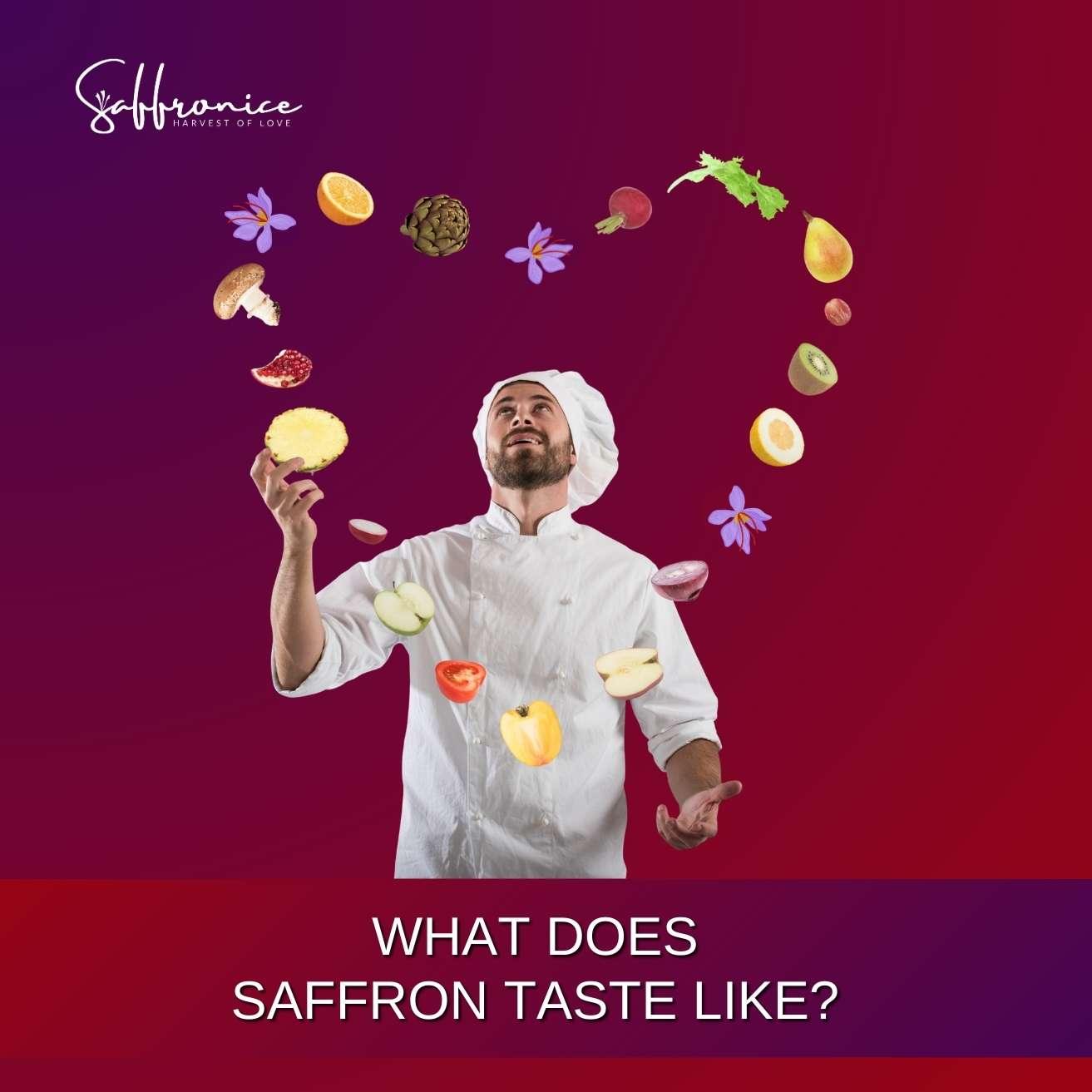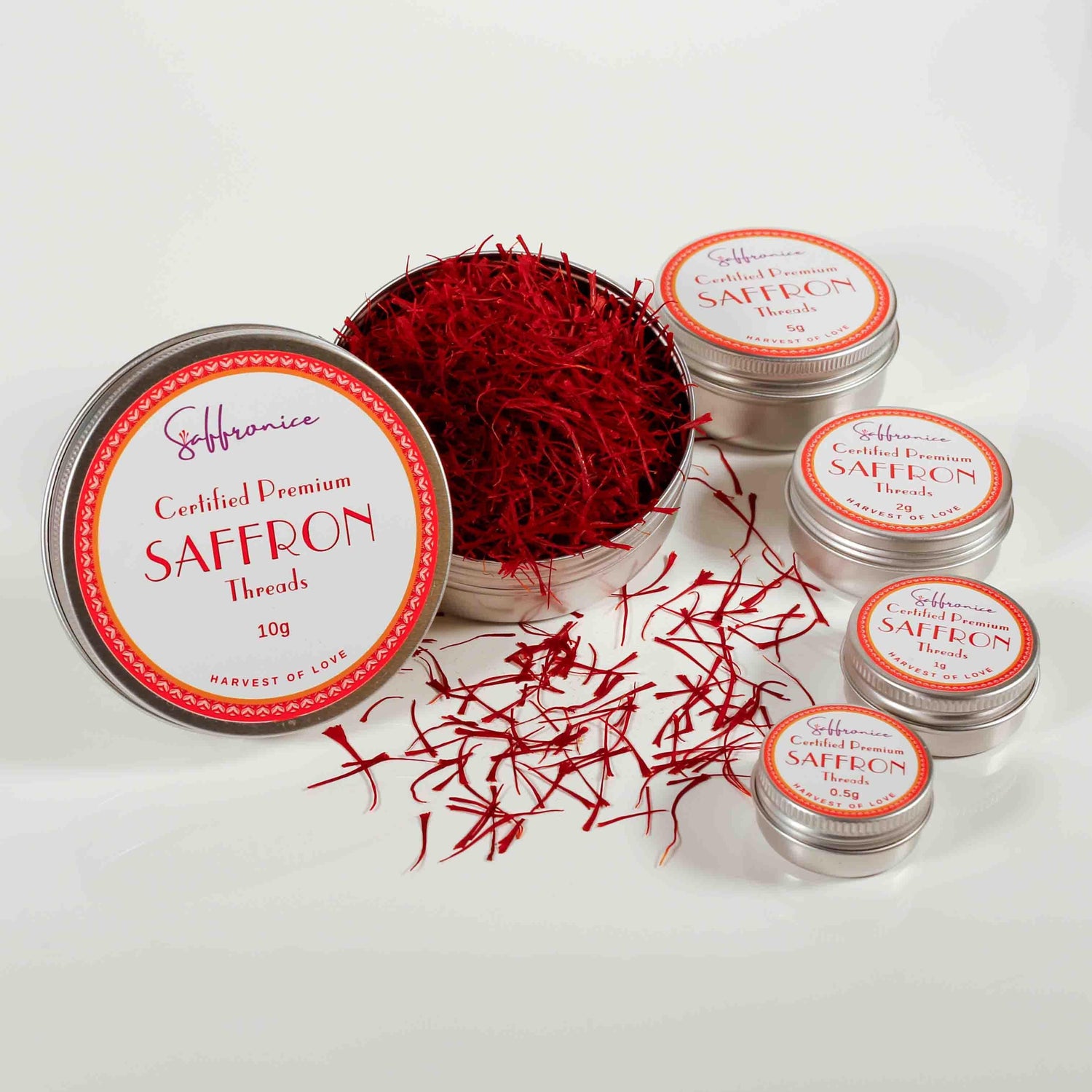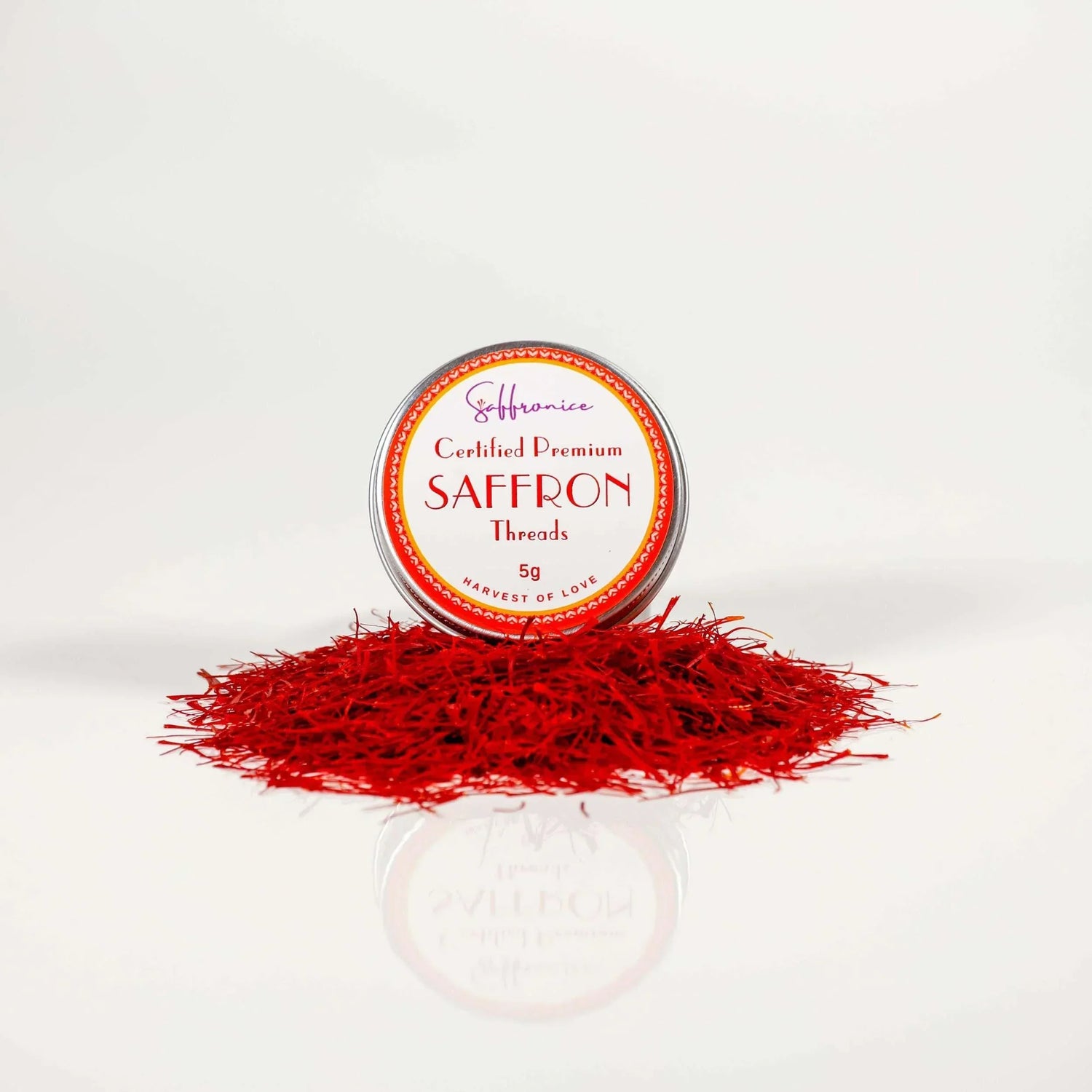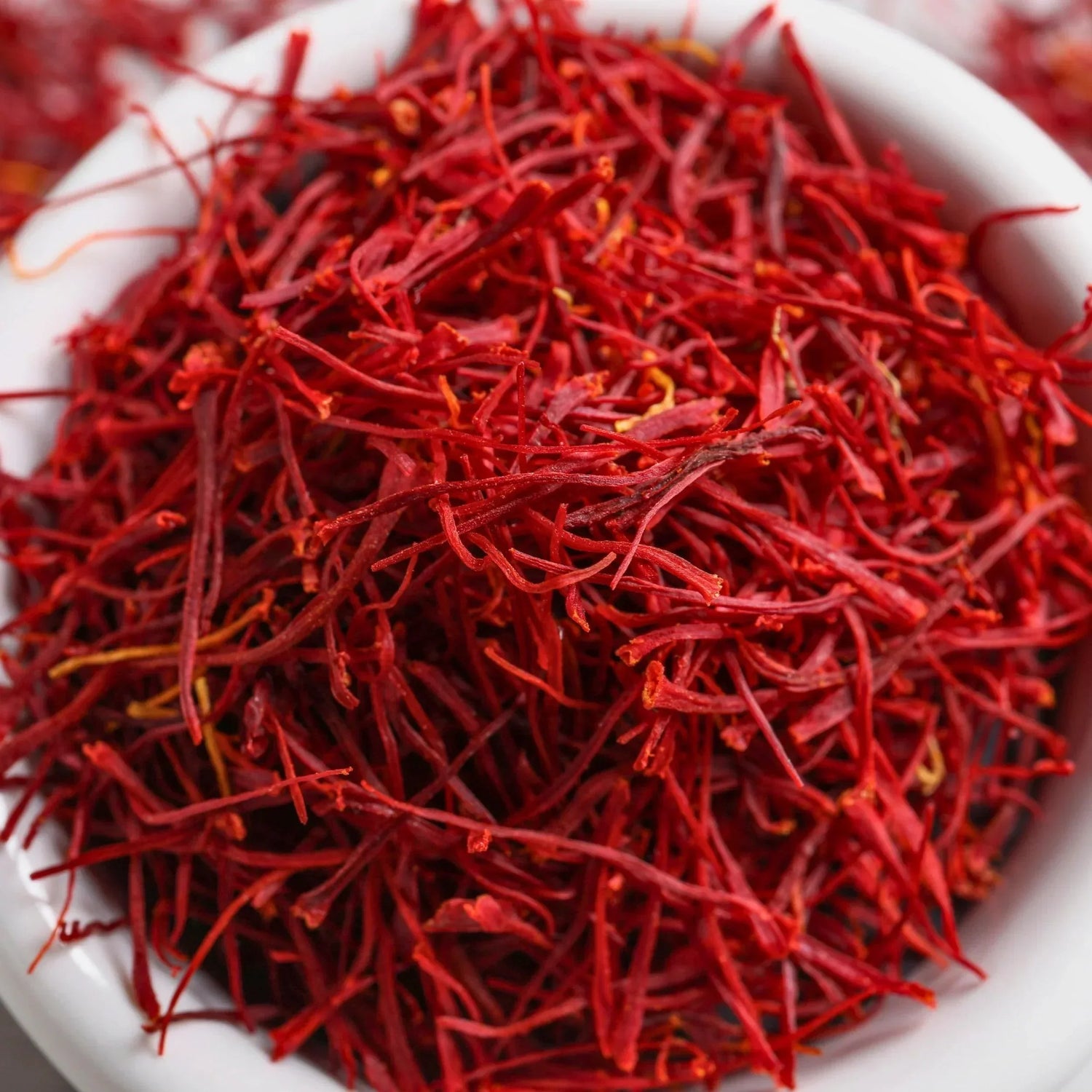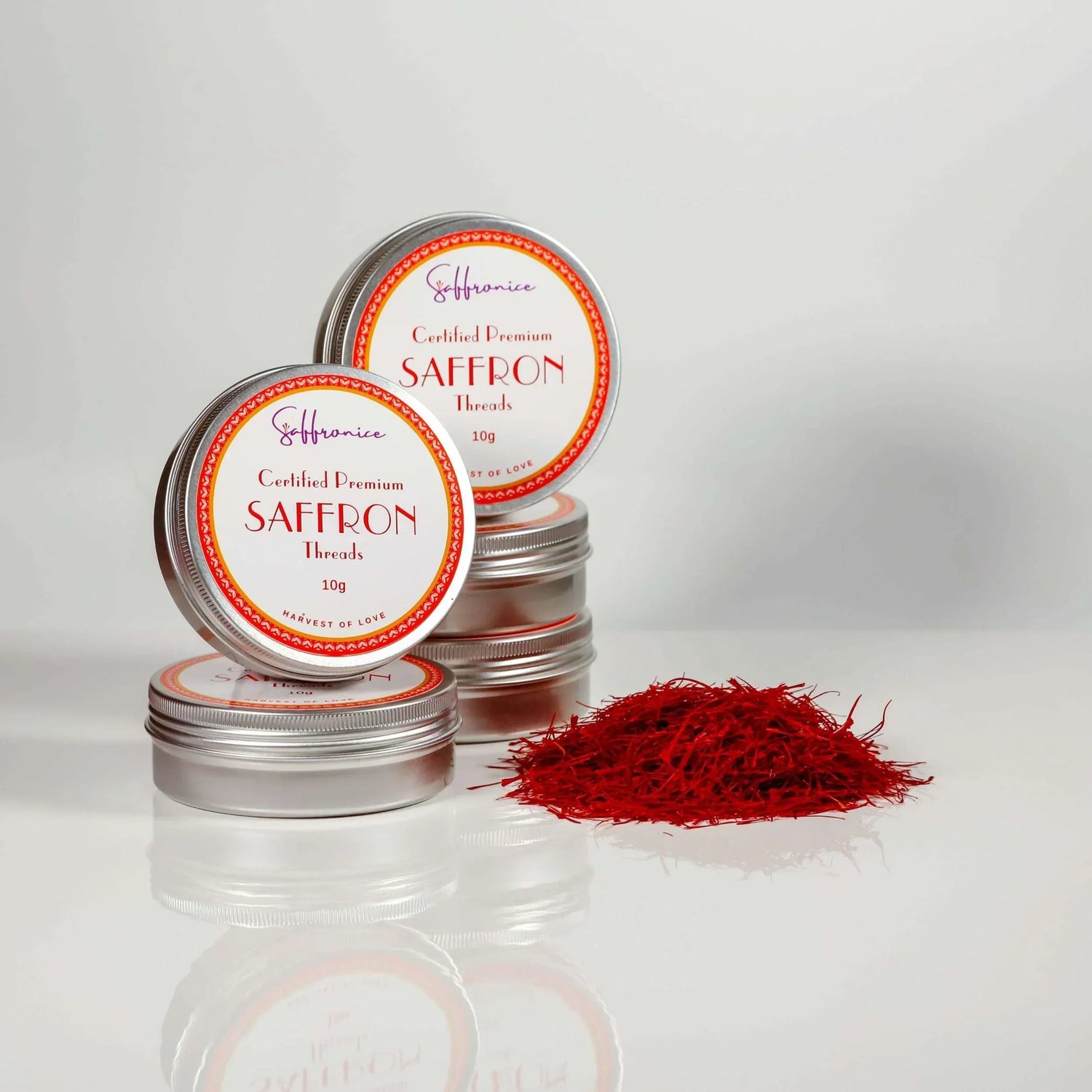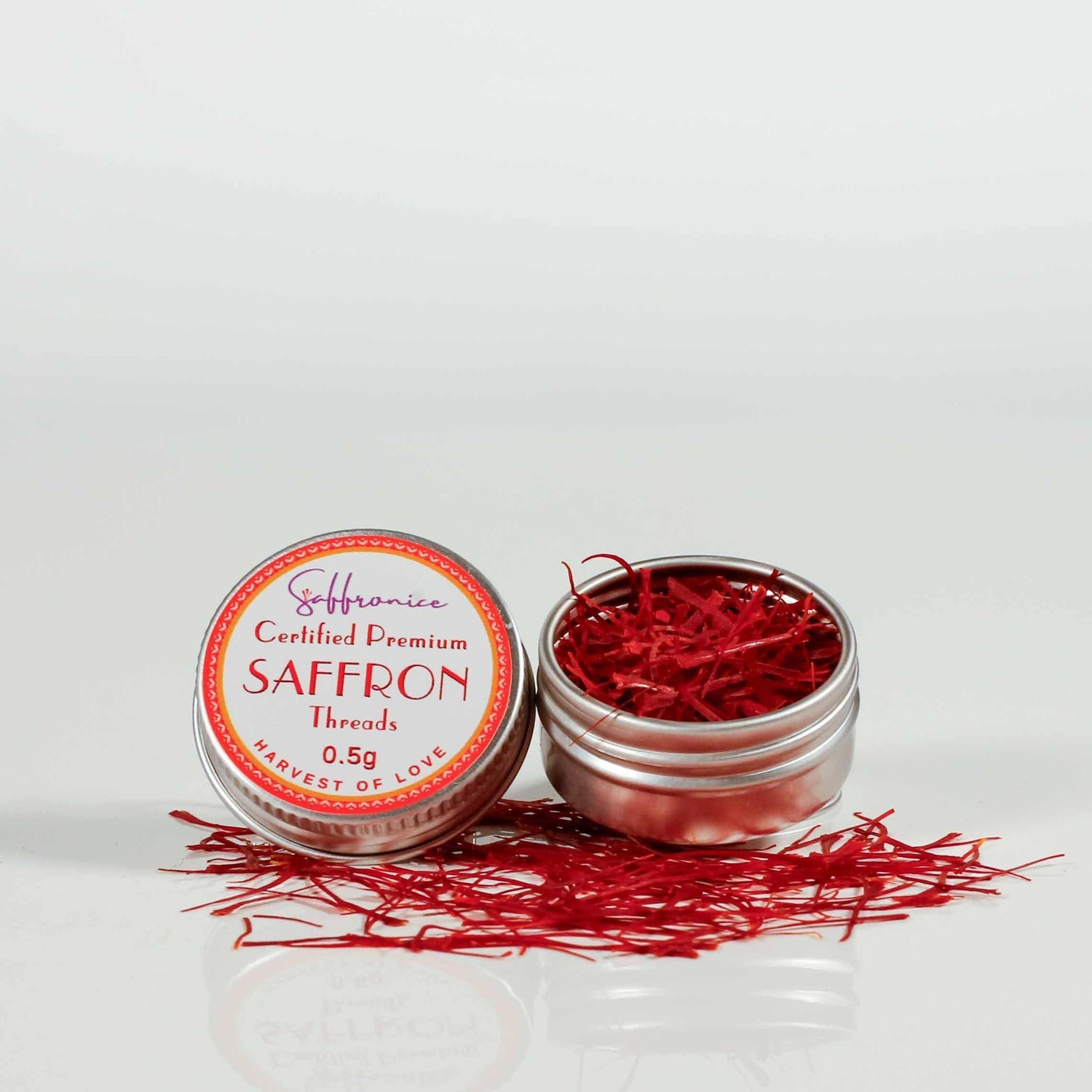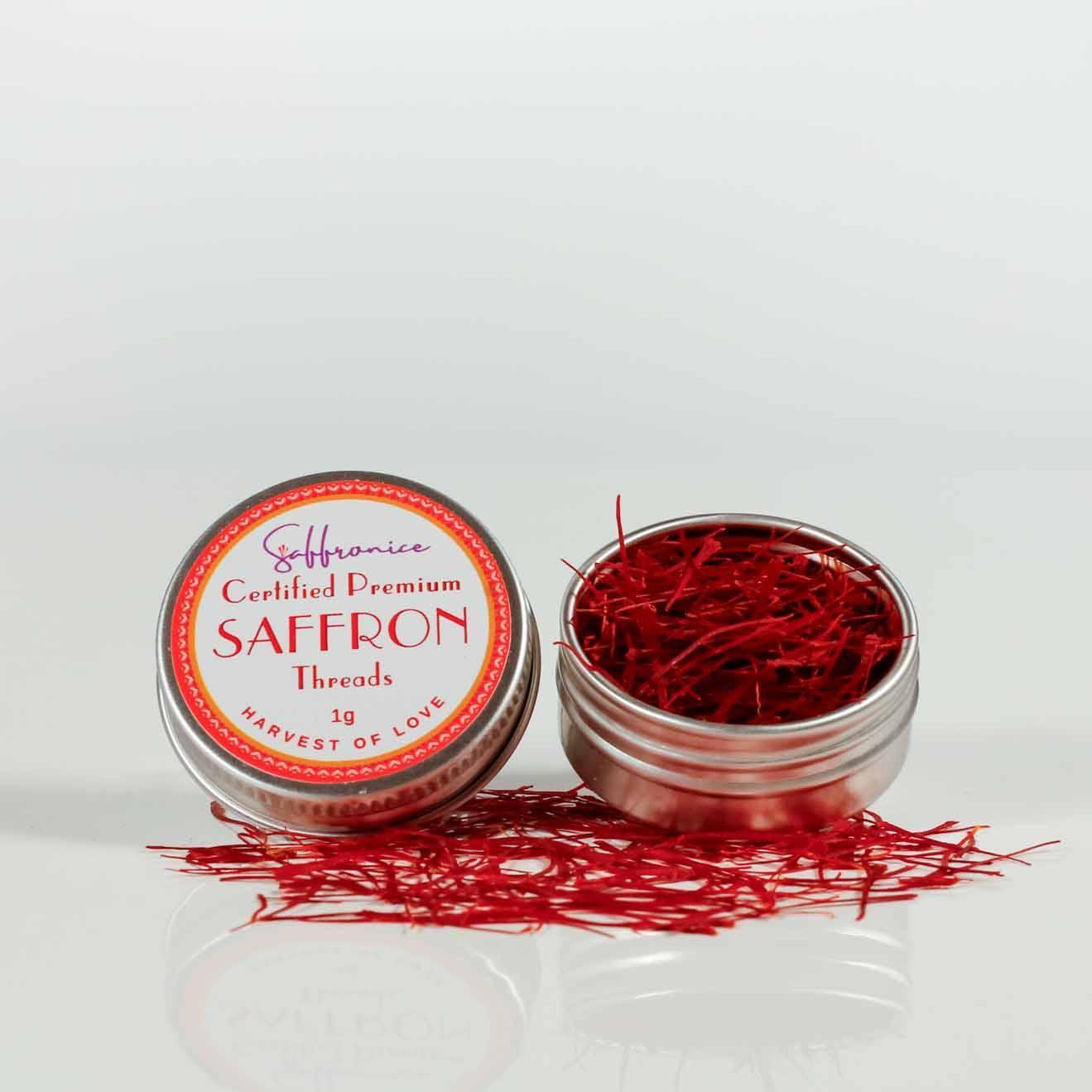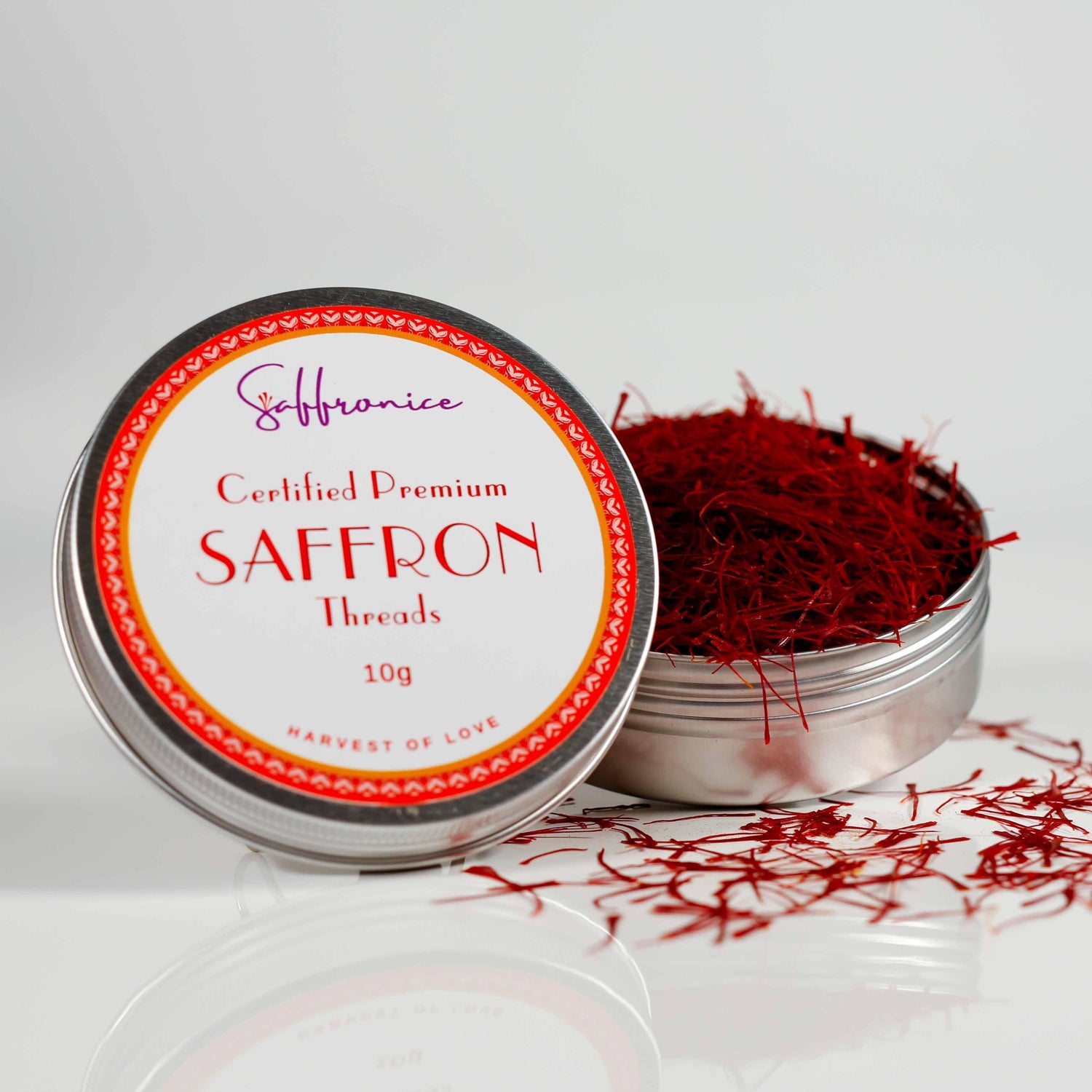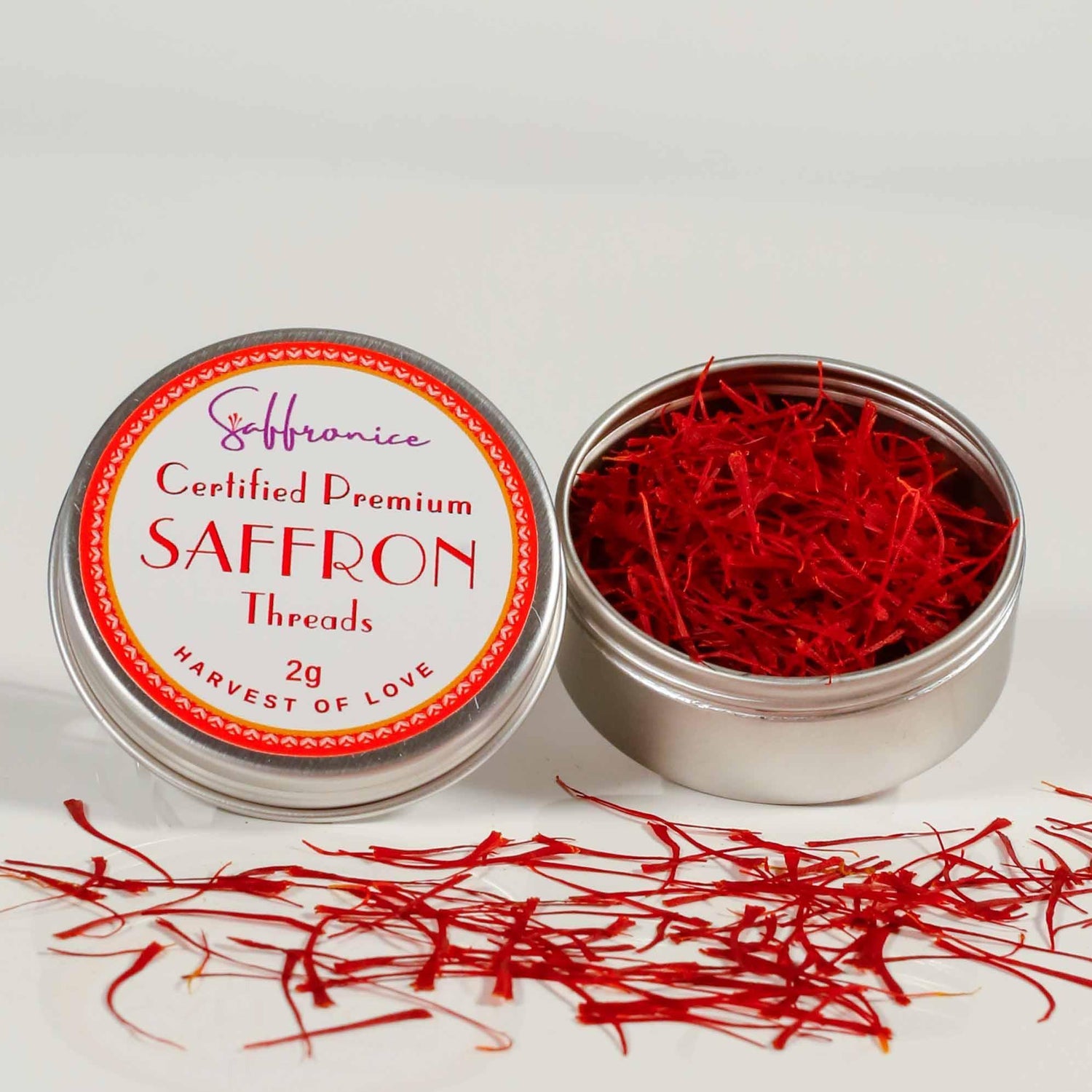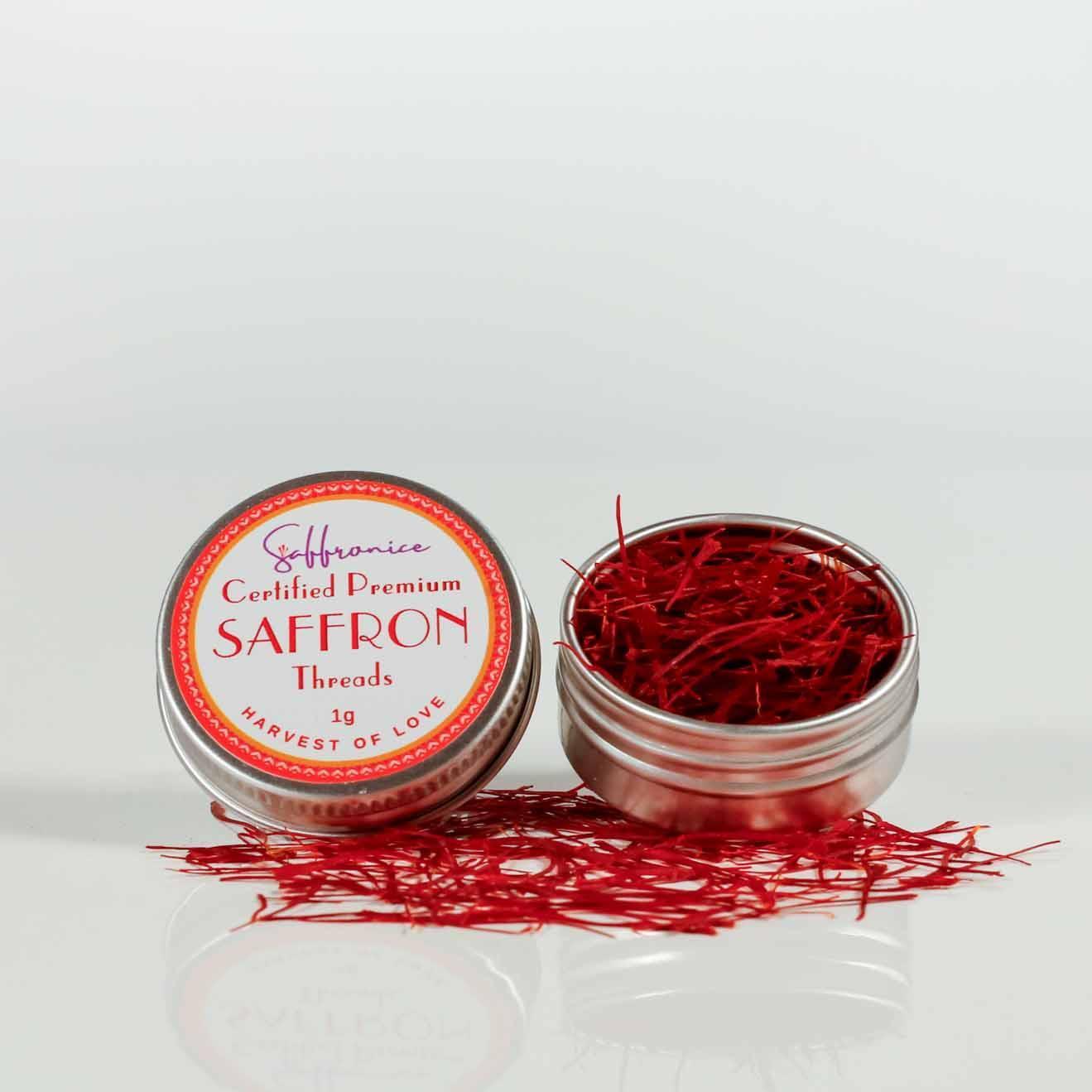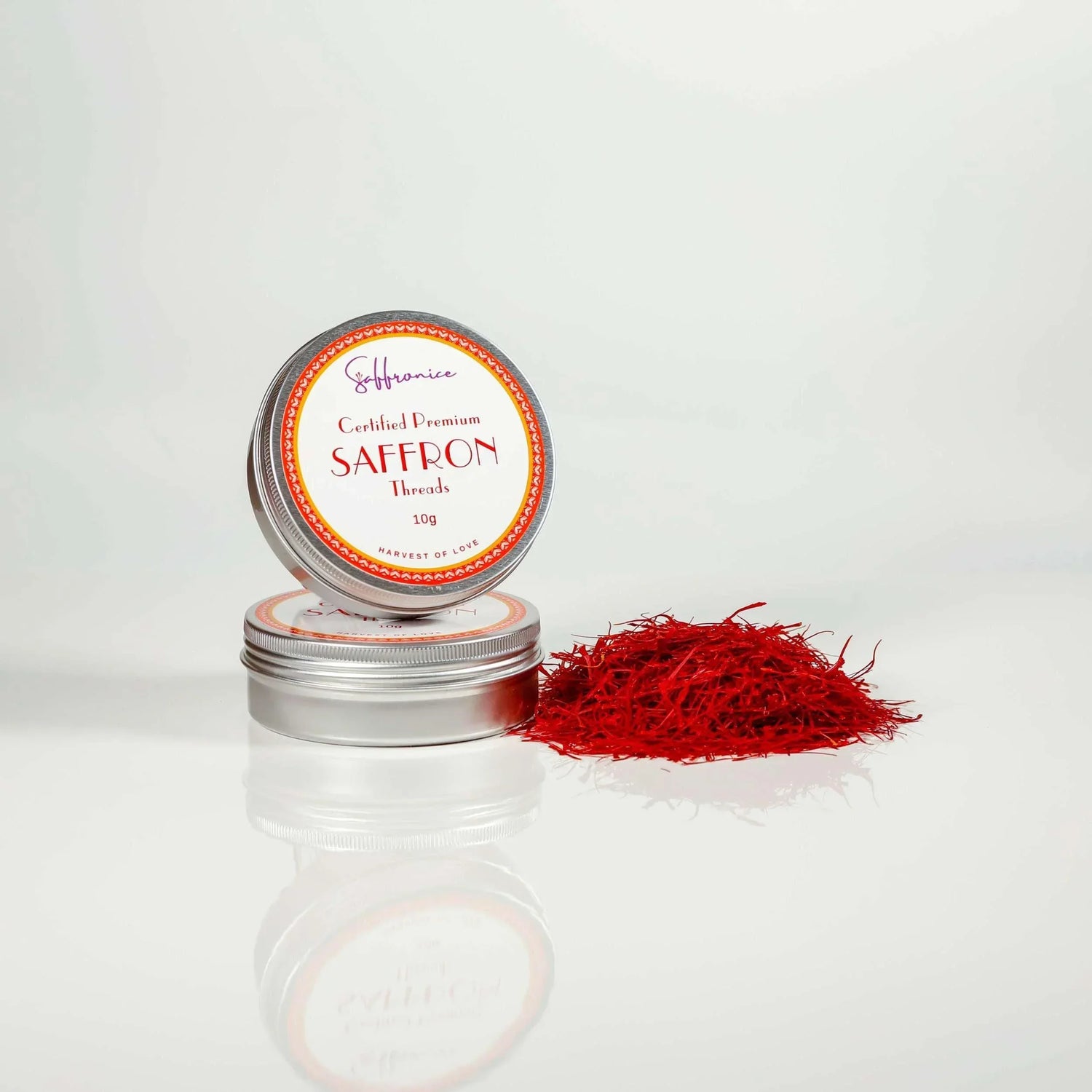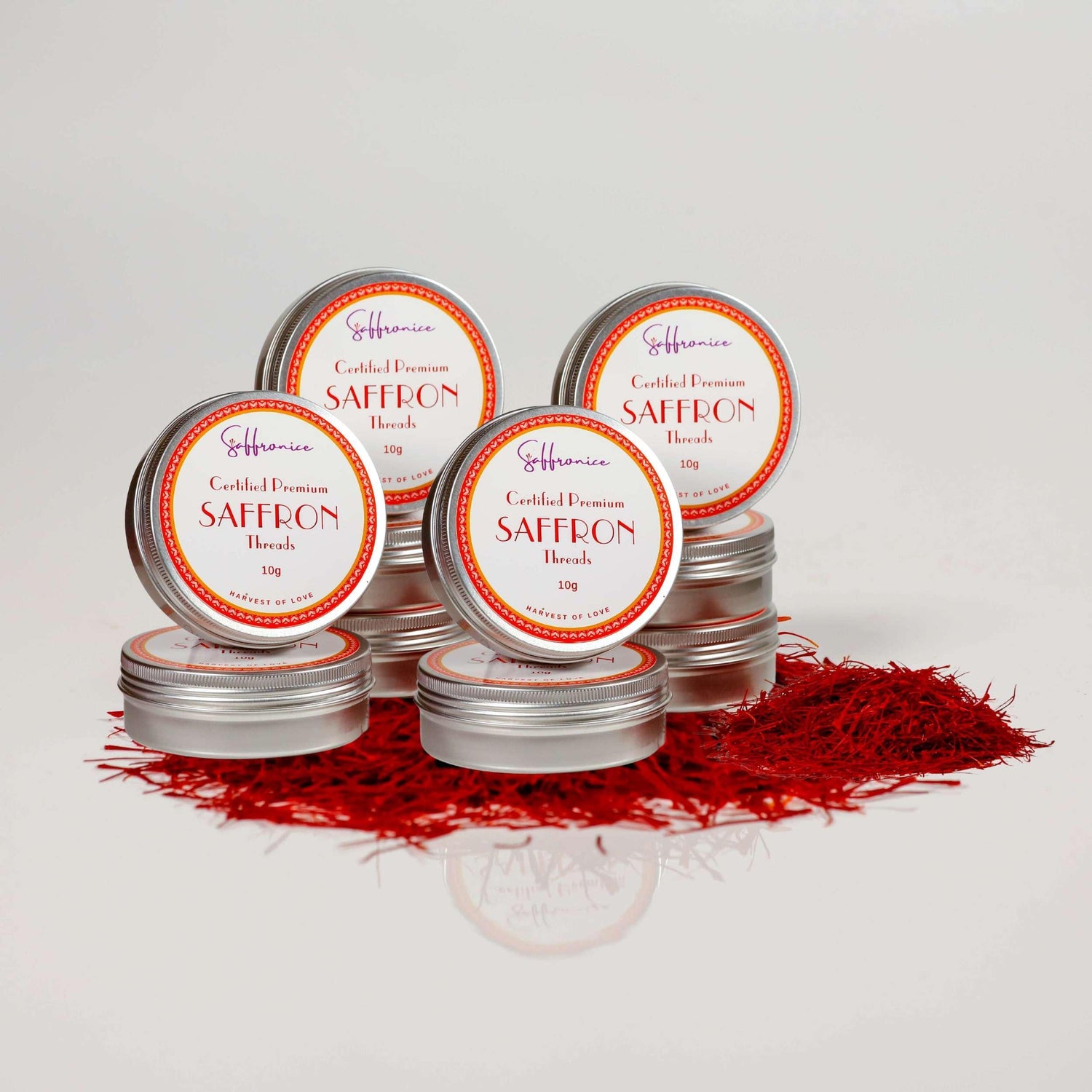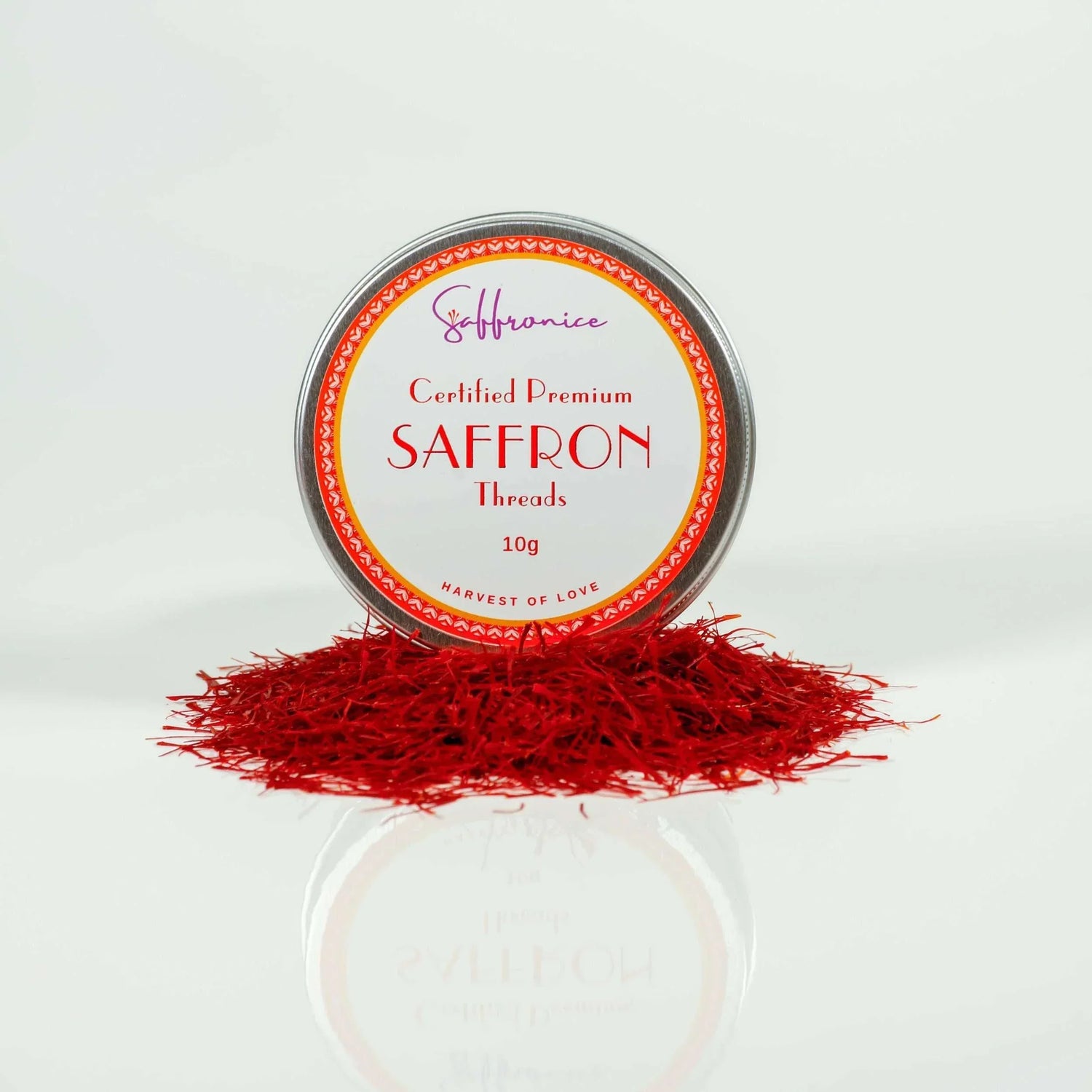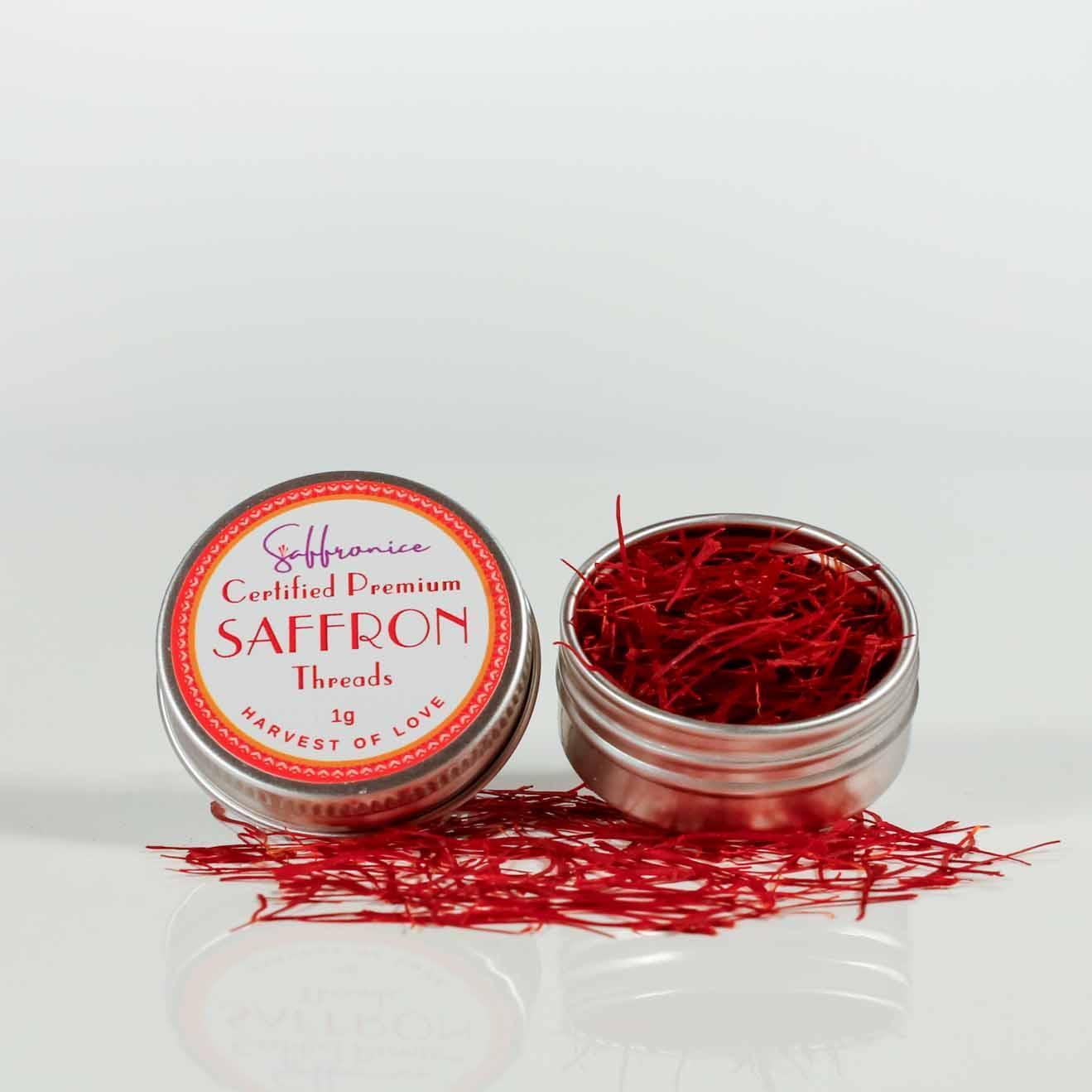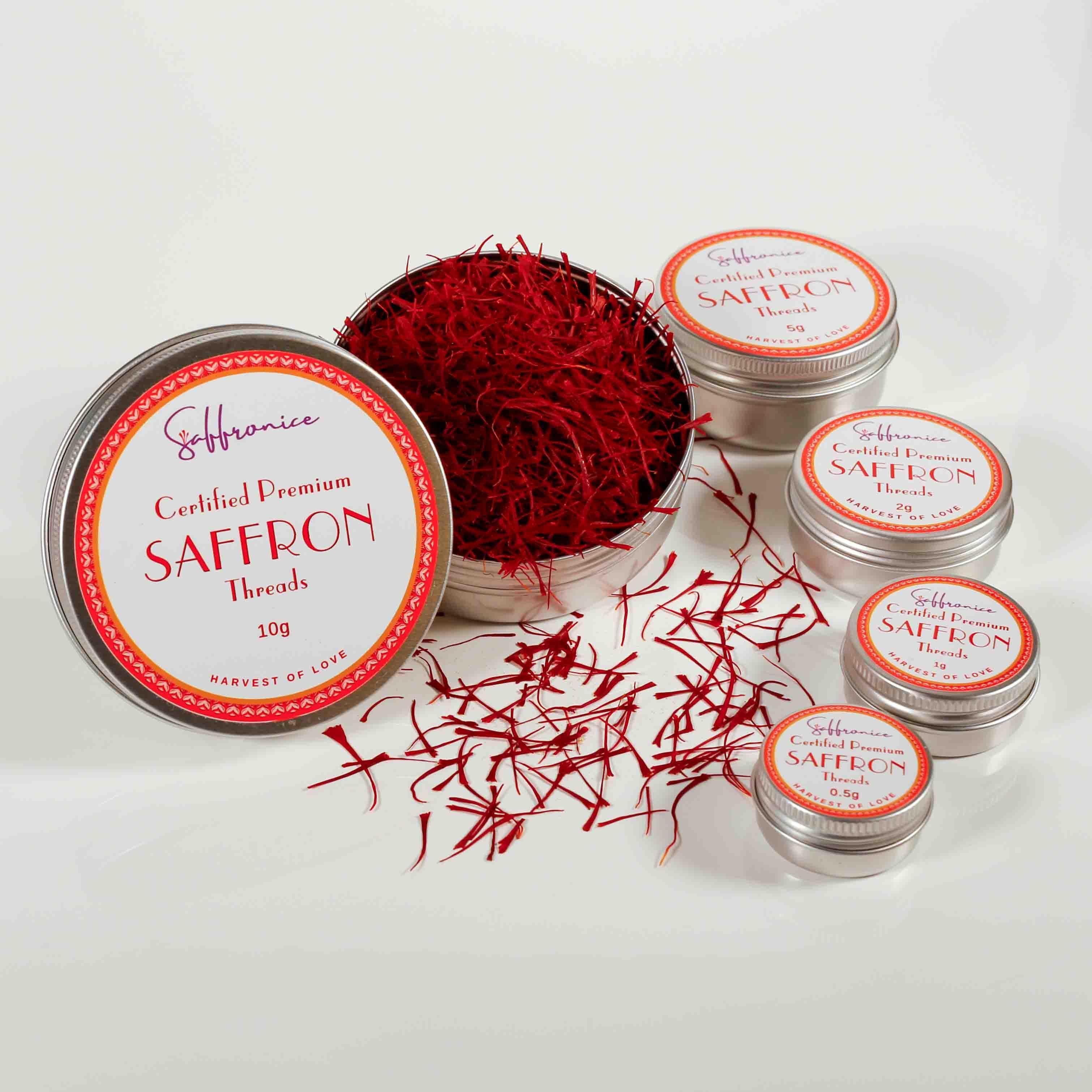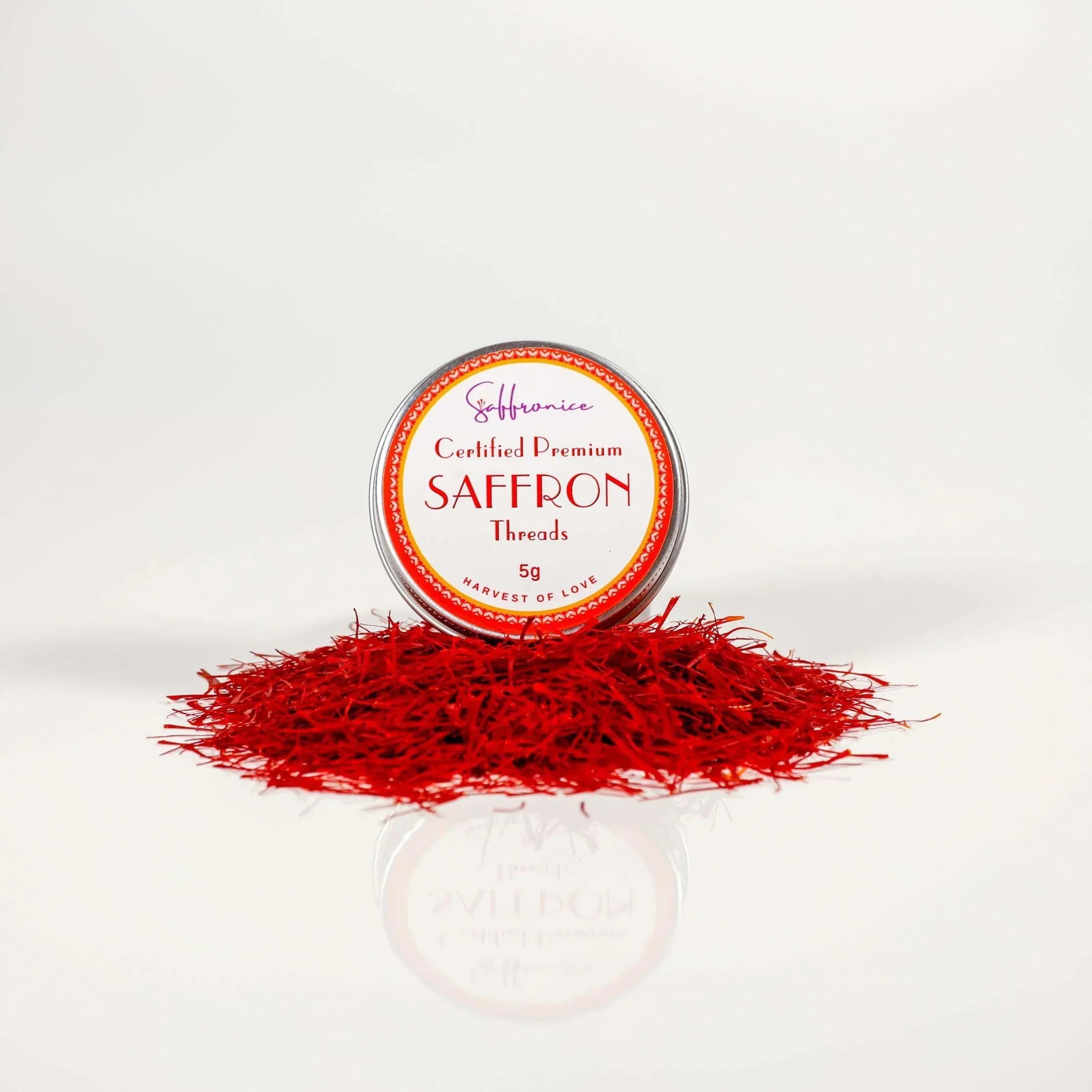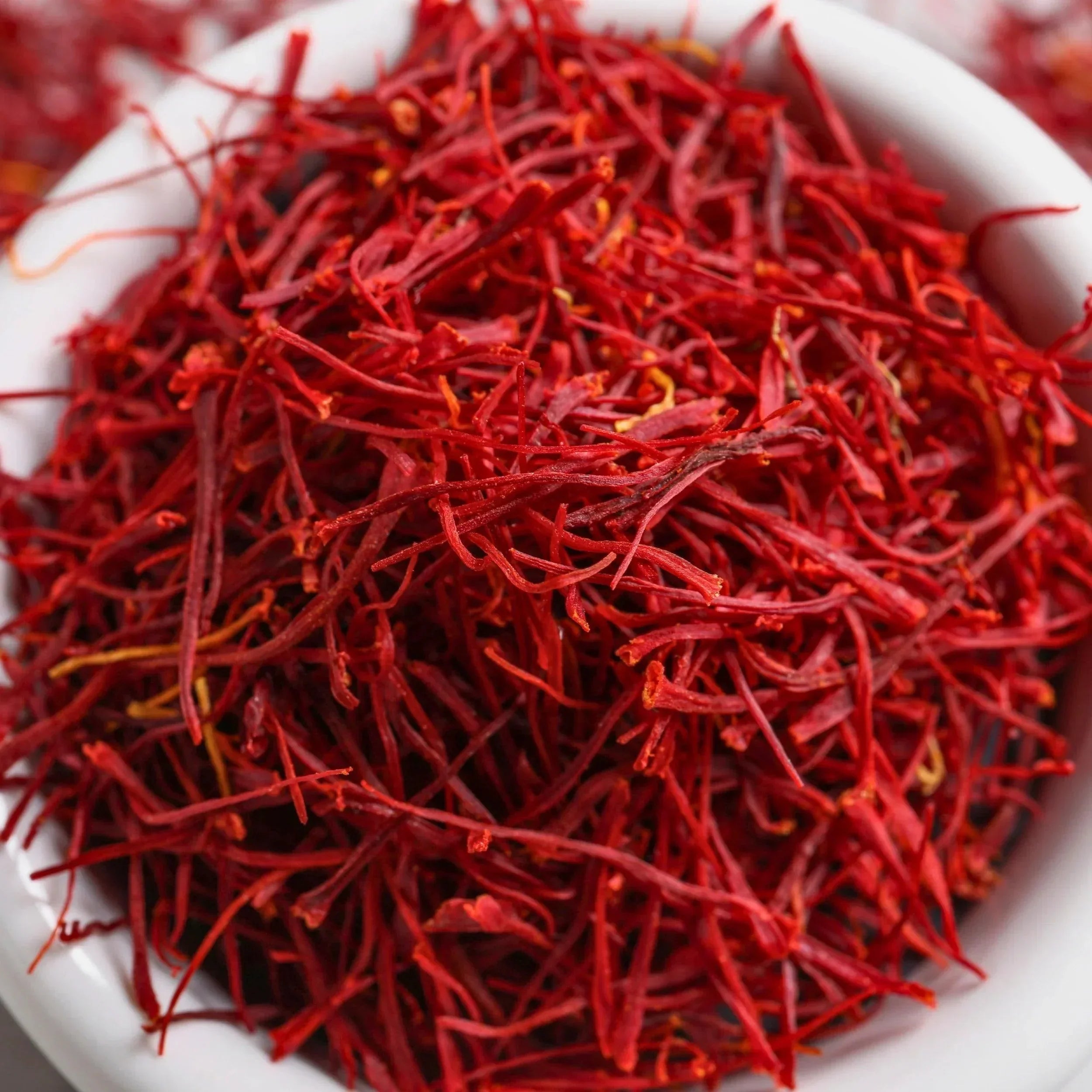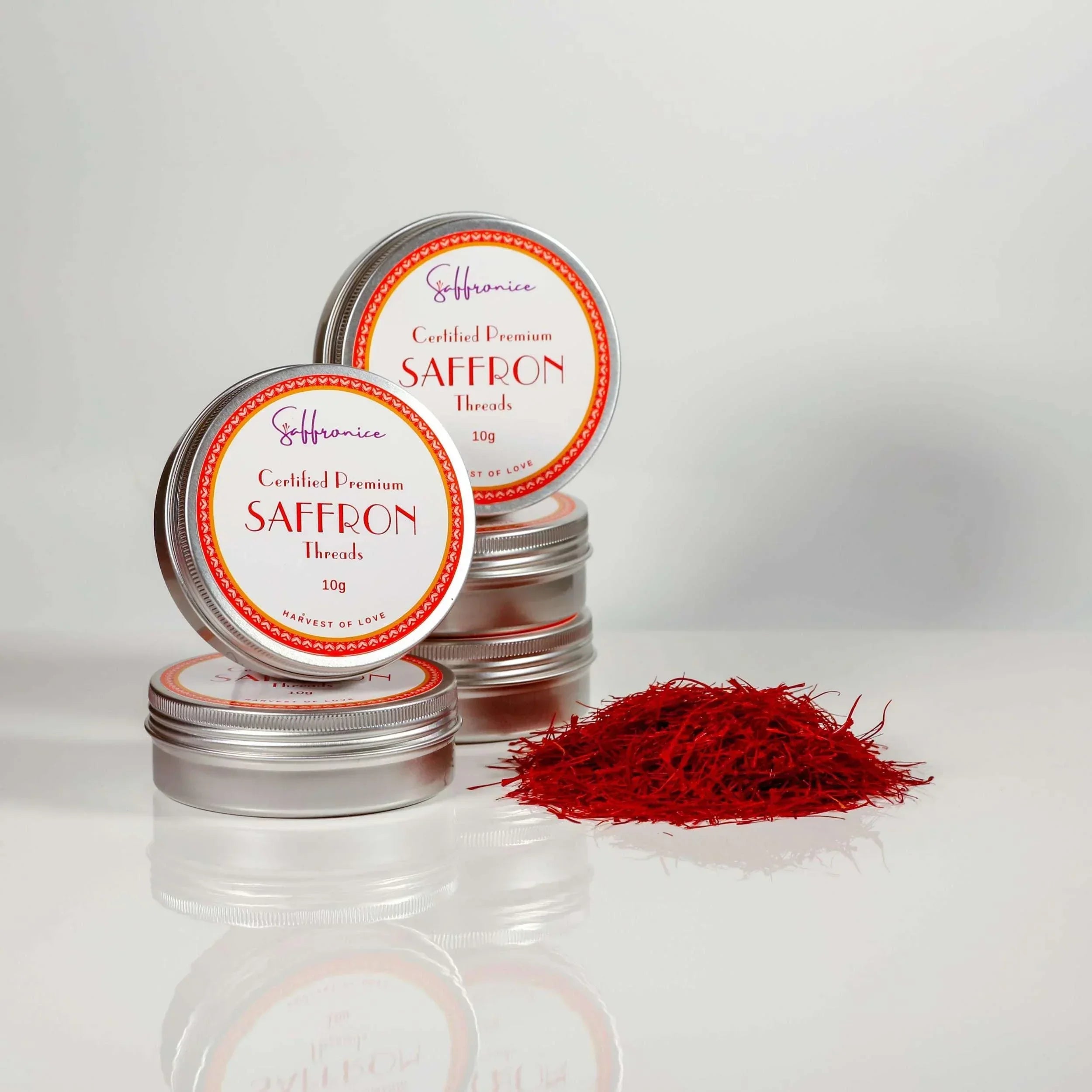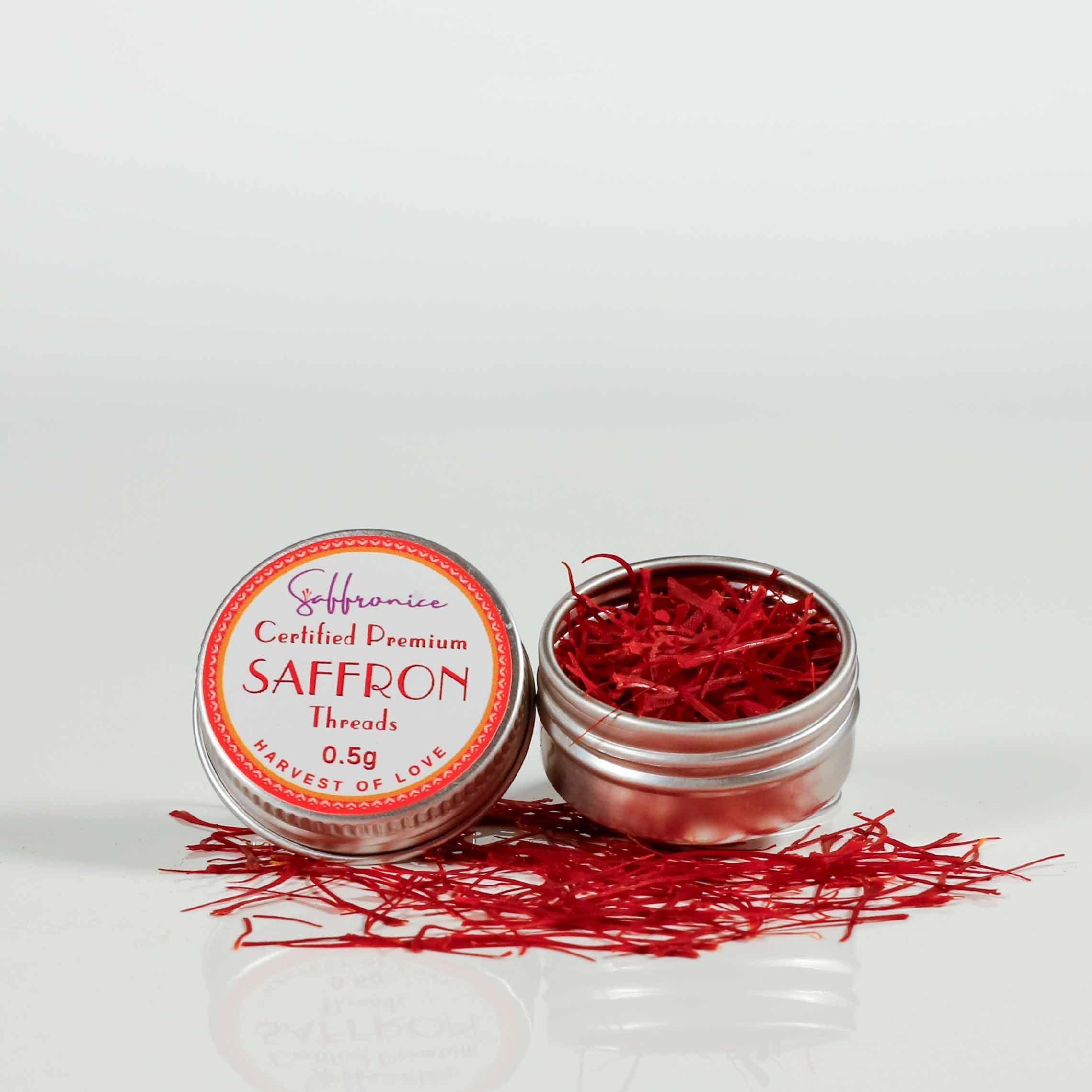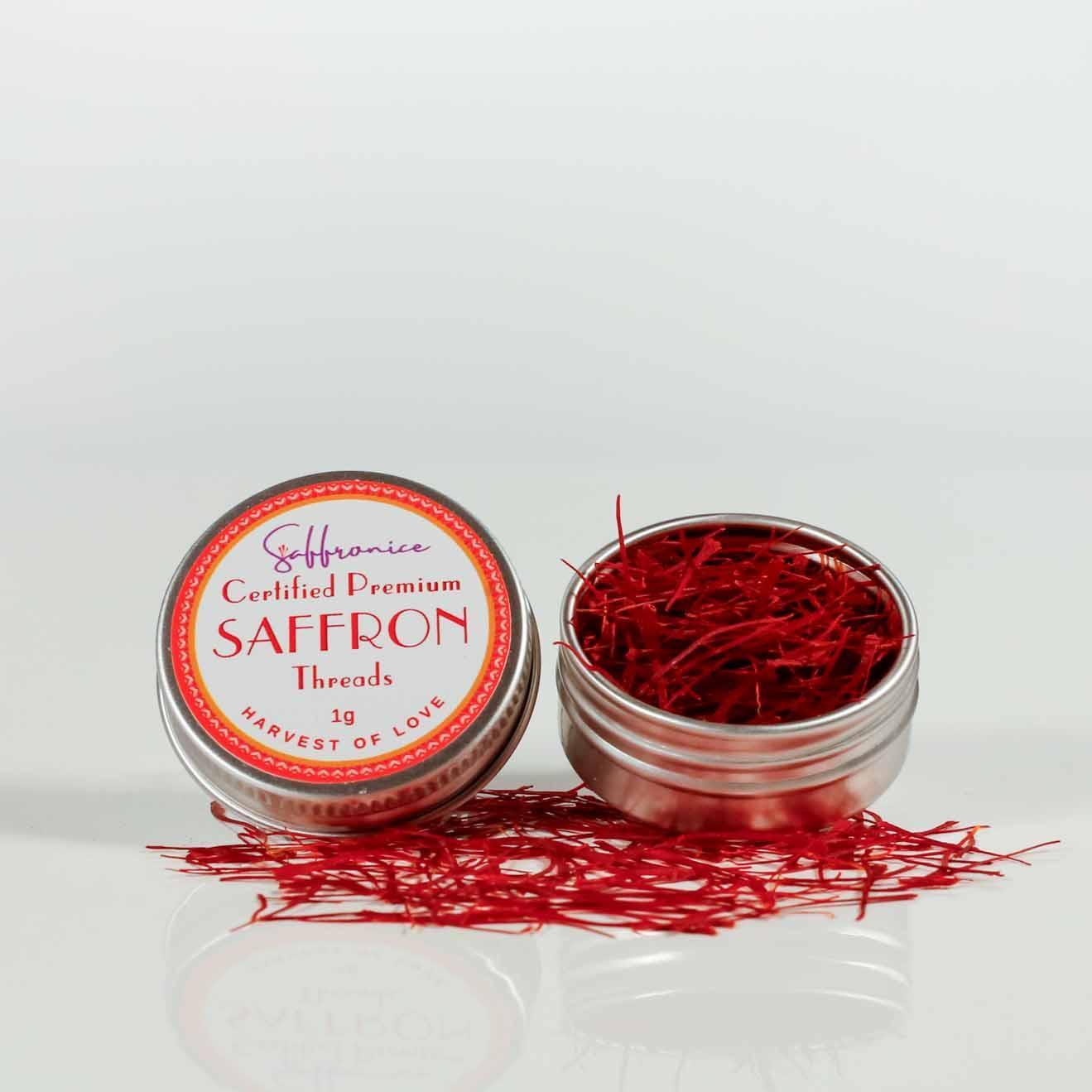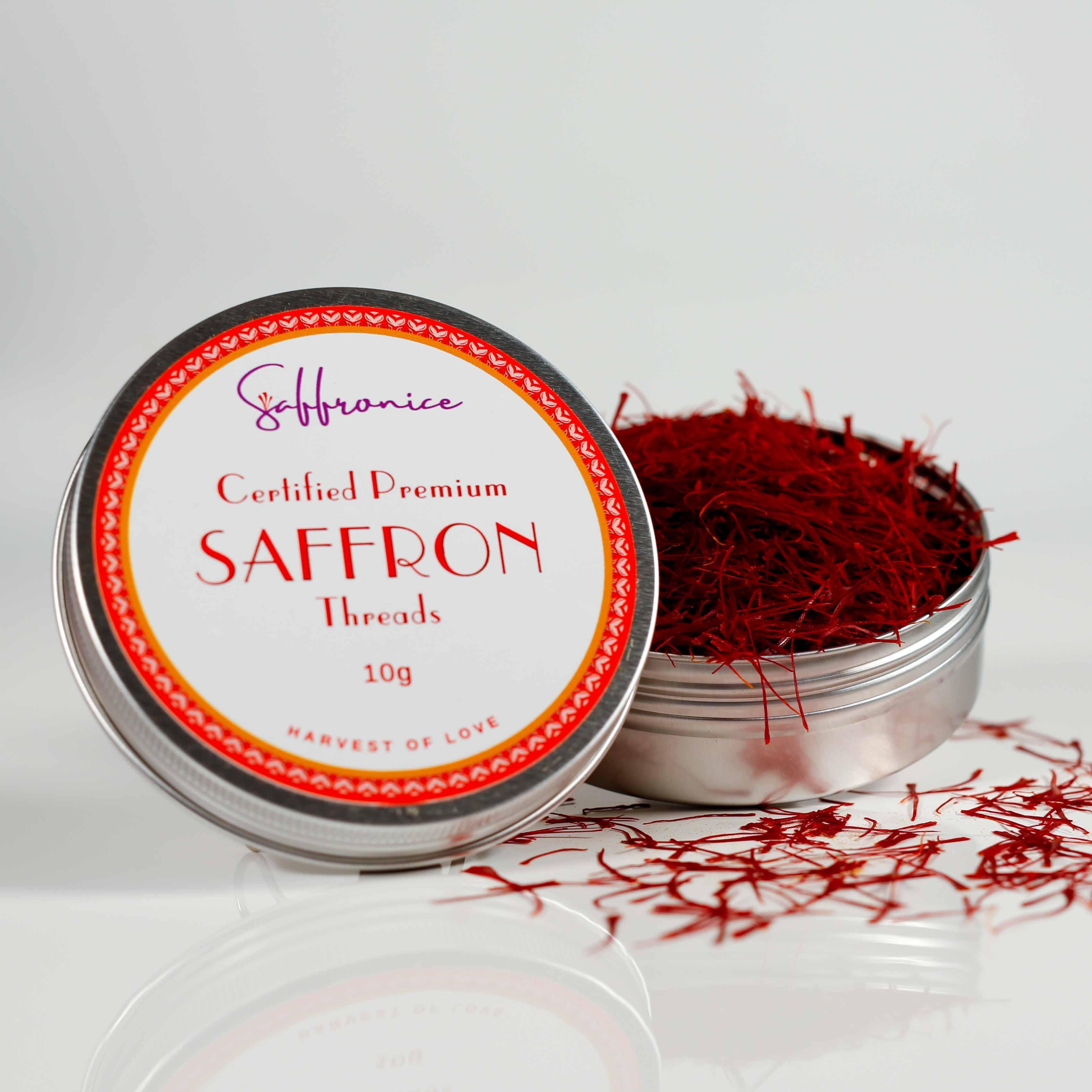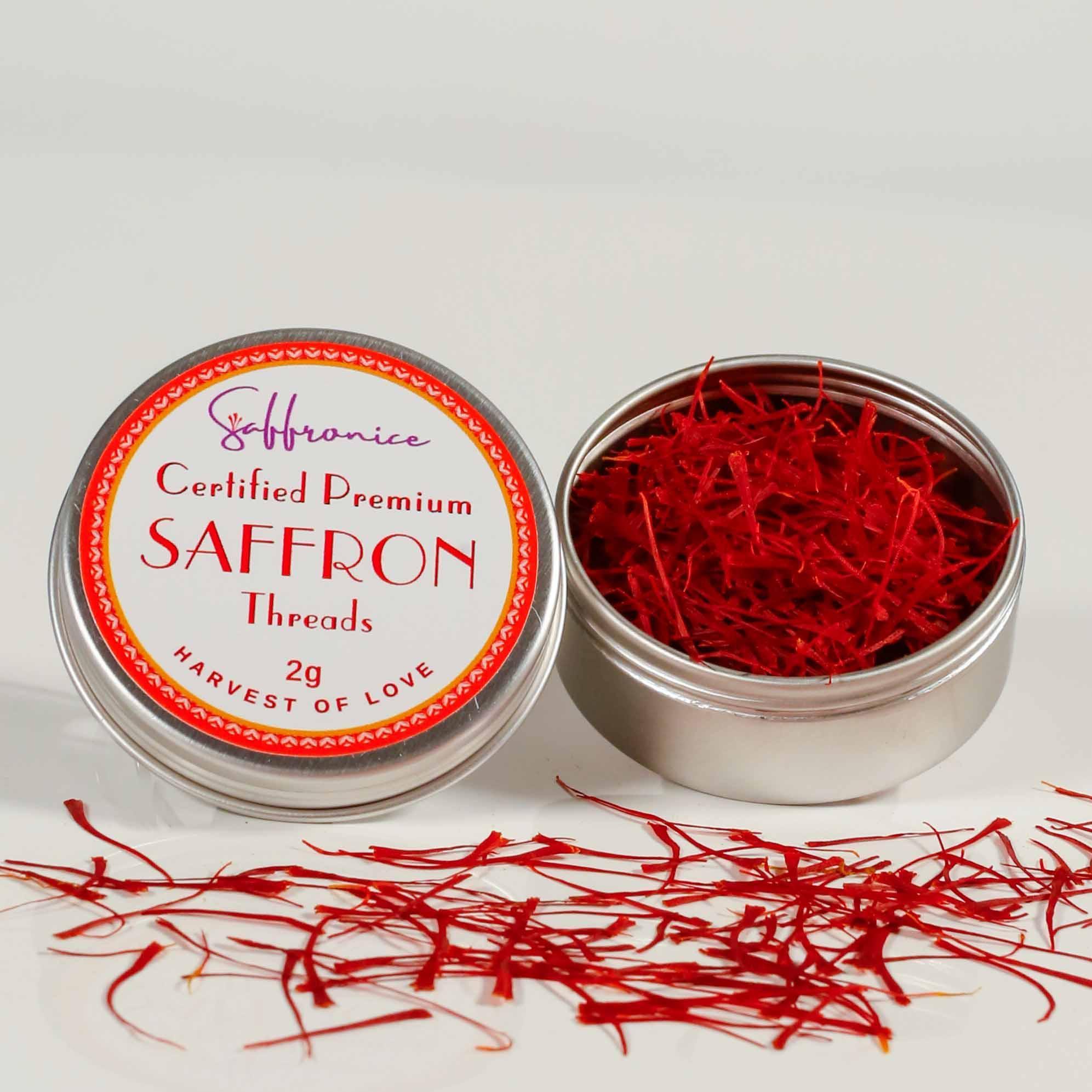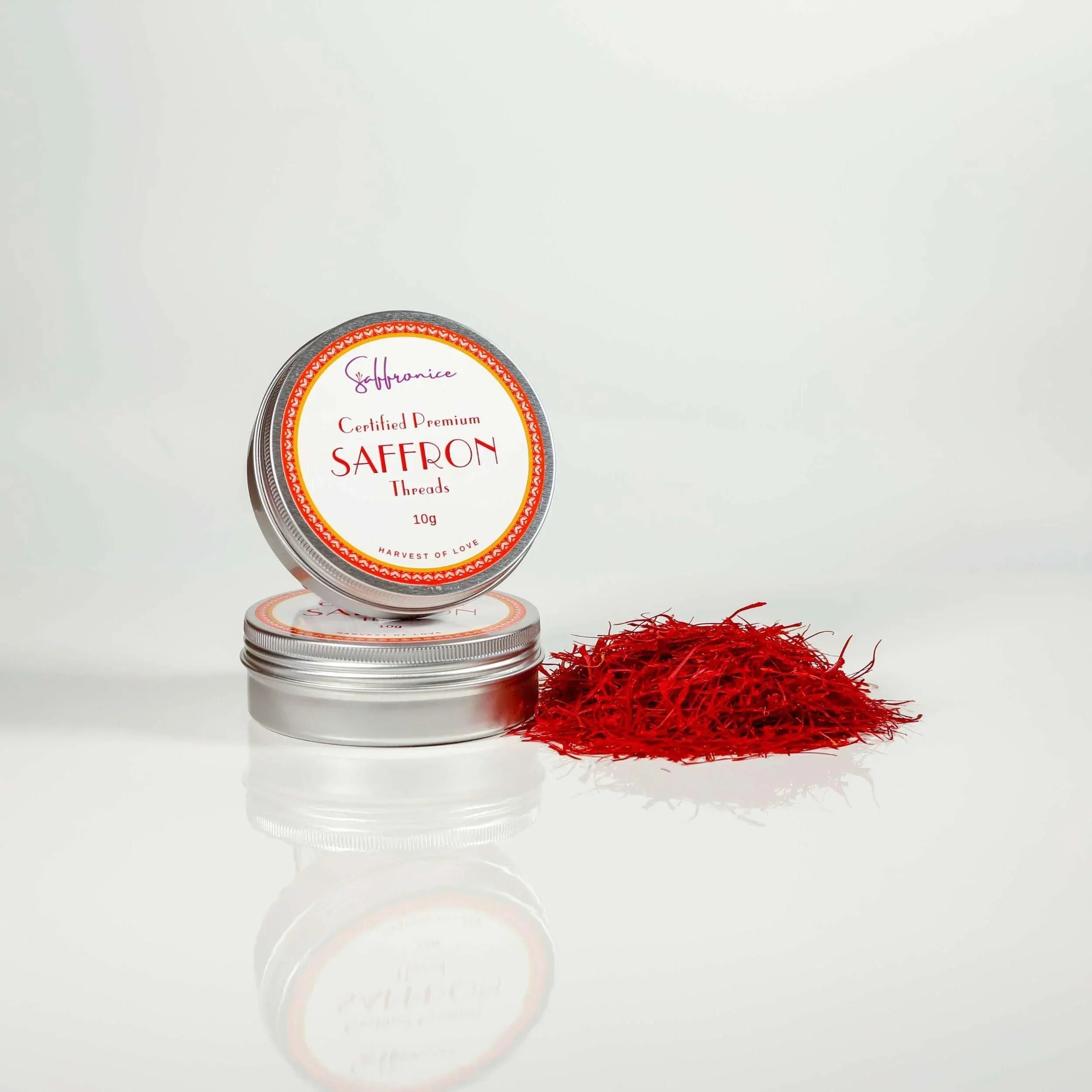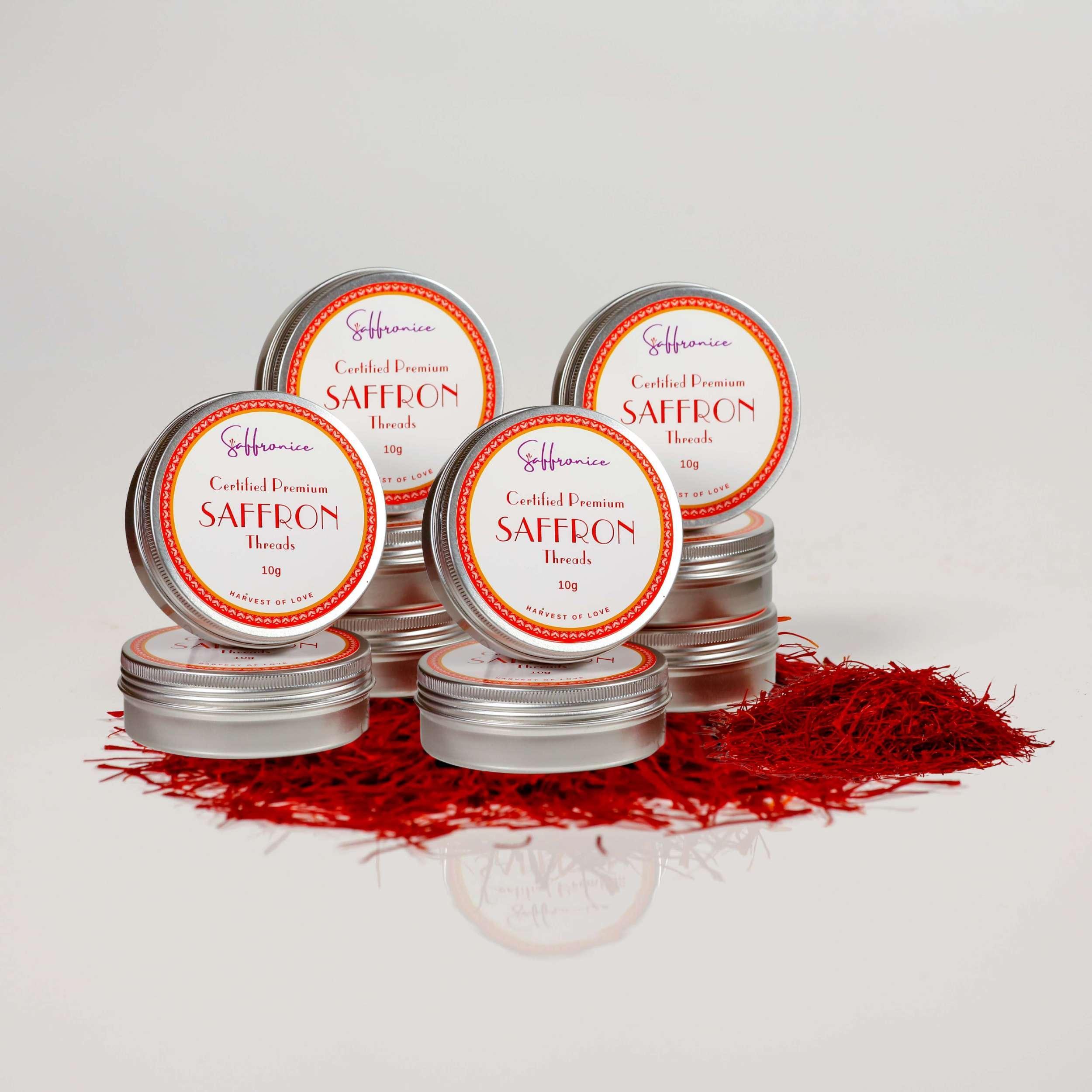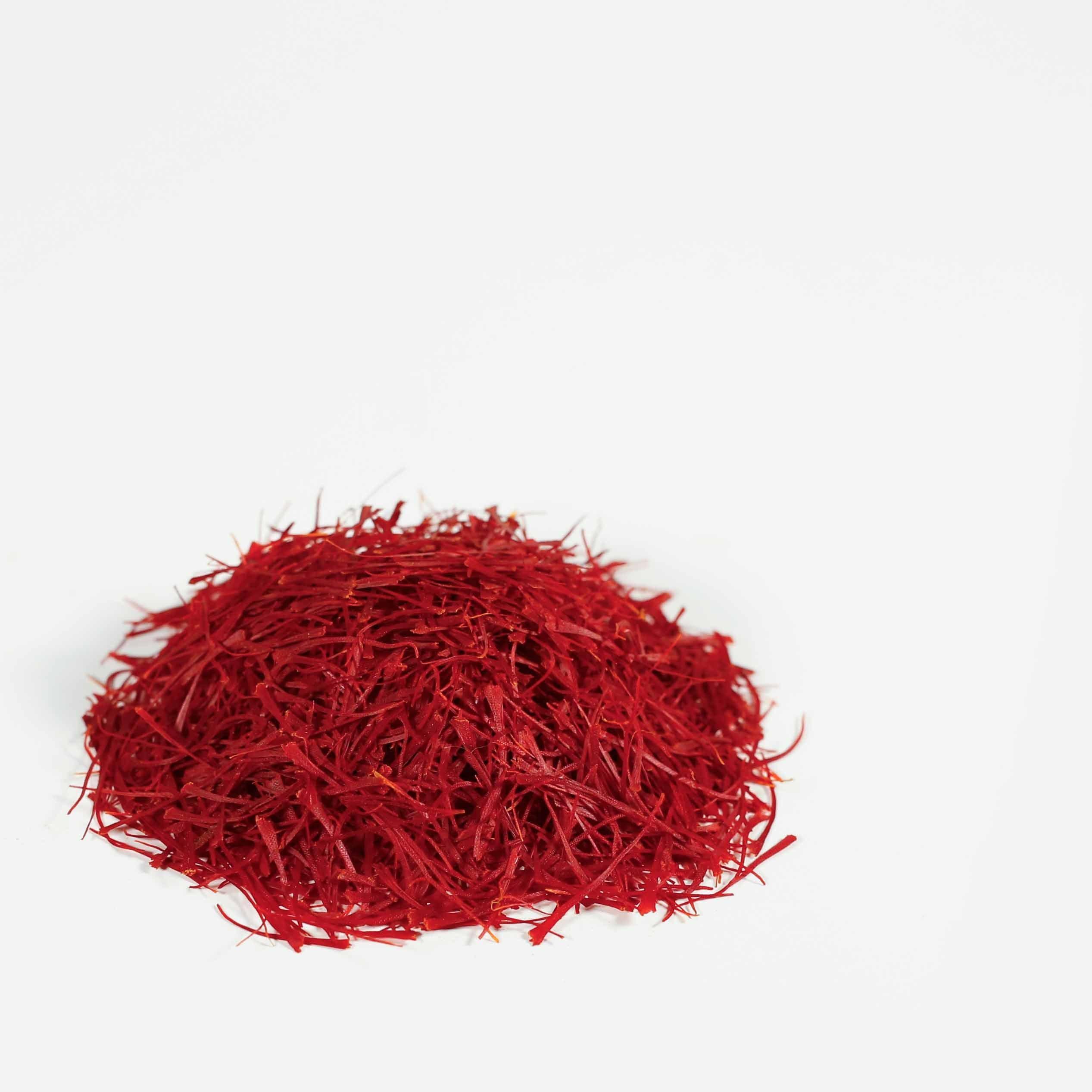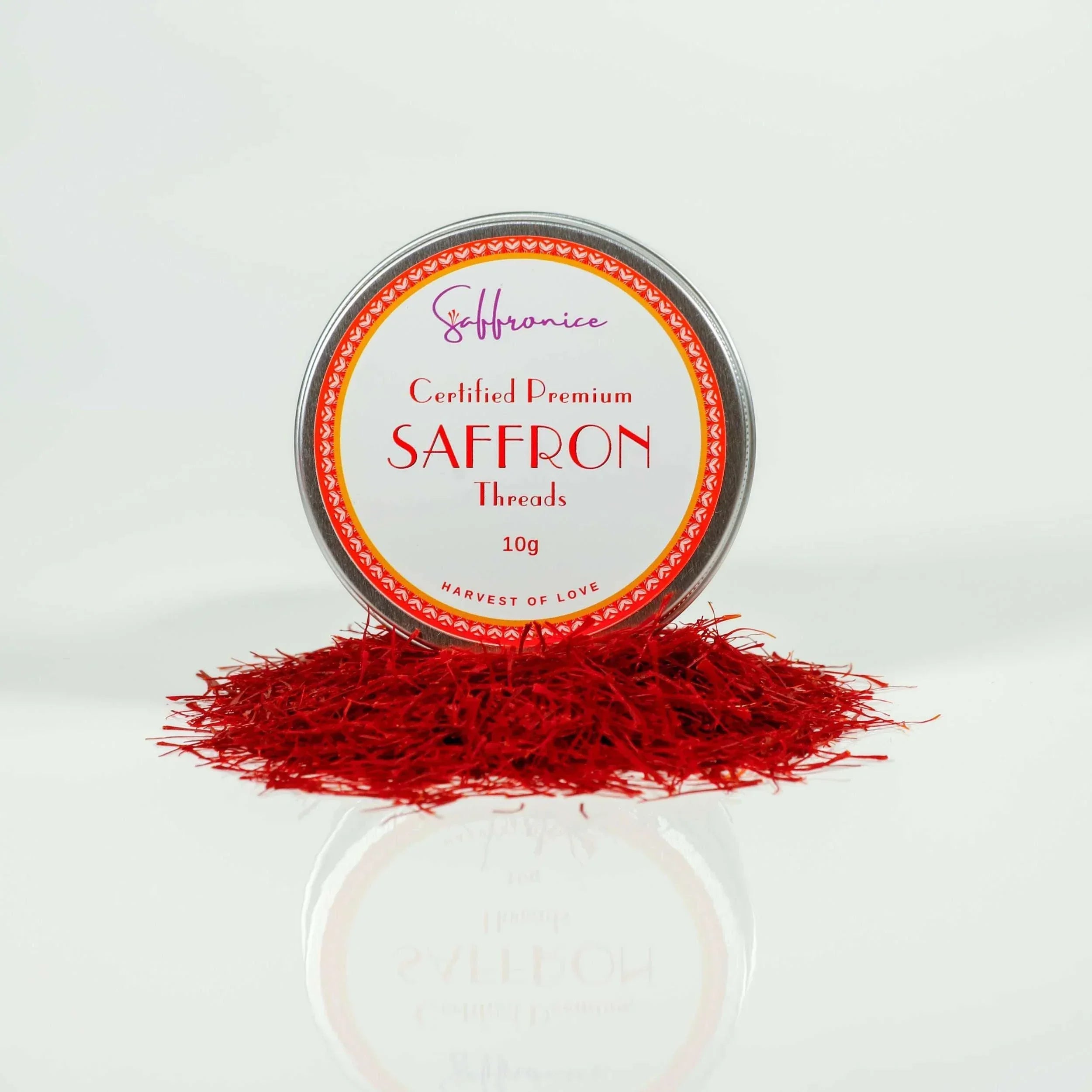Ever wondered what saffron tastes like?
When saffron is used in food or drinks, it imparts a symphony of sweet, earthy, and floral notes, with a hint of bitterness and a complex aroma that lingers on the palate. However, chewing on dry saffron threads reveals a bitter and unpleasant taste. Now, let's dive deeper into the enigma of this golden spice and uncover the science behind its unique flavor.
Introduction: The Enigma of Saffron
From the sun-drenched fields of Iran to the Mediterranean shores of Spain, saffron has coloured dishes and lives with its vibrant hues and mysterious aroma. It's not just a spice; it's a slice of history, wrapped in folklore, and steeped in the rituals of cultures far and wide.
But what exactly does saffron taste like?
It's a question that's puzzled chefs, foodies, and scientists alike. Unlike anything else in your spice drawer, saffron offers a flavour that's as complex as its history. Today, we're donning our lab coats and peering through the microscope to explore the unique taste of saffron from a scientific standpoint. Is it sweet, bitter, or a bit of both? And why do some people adore it while others are less enthralled?
Join me on this flavourful journey as we unravel the enigma of saffron, diving into the science behind its taste and discovering how this ancient spice can transform modern dishes. Buckle up, taste adventurers; we're about to explore the world of flavour like never before!
The Science of Taste: A Flavourful Journey

Welcome to the fascinating world of taste, where every bite and sip offers a universe of experiences! Have you ever paused to wonder why certain foods tickle your fancy, while others... not so much? Well, the science of taste is here to unravel some of those mysteries, with our trusty taste buds leading the expedition.
Understanding Taste Buds: The Flavour Detectives
Our taste buds are the unsung heroes of our culinary adventures. Tiny yet mighty, they dot our tongues and work tirelessly to decode the flavours of everything we consume. Within each taste bud are specialised cells that act like little scouts, always on the lookout for the food particles we introduce into our mouths.
How Taste Buds Work
When food hits your tongue, it begins a remarkable transformation. Dissolved by your saliva, the food's molecules engage with these scout cells, sending signals through the nervous system straight to your brain. It's here, in the command centre, that those signals are interpreted as the tastes we recognise and either love or learn to avoid.
The Role of Taste Buds
But taste buds don't work alone. They're part of a sensory team, including your sense of smell and even texture perception, all contributing to the full flavour experience. Ever noticed how food tastes bland when you're congested? That's because your taste buds and olfactory sensors (those responsible for smell) are best buddies, working together to create the rich tapestry of taste.
The Five Basic Tastes: Building Blocks of Flavour
Now, let's break down the basic tastes that form the foundation of everything delicious.
1. Sweet: The Universal Pleaser
Sweetness, often linked to sugar and its substitutes, is nature's way of saying, "This is energy-rich, go ahead!" It's a fundamental taste that helps guide us towards nutrient-dense foods.
2. Sour: The Tangy Twist
Sourness, with its sharp and tangy profile, is all about acidity. It can be a warning sign of spoilage or an invigorating flavour that adds brightness to dishes, like a splash of lemon on a piece of grilled fish.
3. Salty: The Flavour Enhancer
Saltiness, crucial for our survival, highlights and balances the flavours in food. It's not just about making things "salty"; it's about enhancing the overall depth and dimension of a dish.
4. Bitter: The Complex Guardian
Bitterness might be the most misunderstood of tastes, often associated with toxicity in nature. However, in the right amounts, it adds complexity and contrast, offering a counterpoint to sweetness and richness.
5. Umami: The Savoury Depth
Umami, the newest member of the taste family, is the savoury richness found in meats, cheeses, mushrooms, and soy sauce. It's the mouthwatering quality that makes you go, "Mmm, what's in this?"
Combining Forces: The Symphony of Flavours
In the culinary world, the magic happens when these basic tastes intertwine, creating flavours that are far more complex than their individual components. Chefs play with these tastes, balancing and contrasting them to achieve dishes that sing with flavour. It's this interplay, this careful balancing act, that can turn a simple meal into an unforgettable experience.
So, the next time you sit down to eat, take a moment to appreciate the science behind each bite. Consider the role of your taste buds and the symphony of basic tastes coming together on your plate. Understanding the science of taste not only enriches your eating experience but also opens up a world of culinary exploration and appreciation. Here's to a delicious journey into the science of taste!
Saffron's Flavour Profile: A Scientific Exploration

Dive into the golden threads of saffron, and you'll find a world of flavour and aroma that's as rich as its history. But what makes saffron such a culinary treasure? Let's put on our science hats and explore the compounds that give saffron its unique taste and the intriguing ways our bodies and brains interpret these sensations.
The Chemicals Behind the Taste
Safranal: The Aroma Powerhouse
Safranal is the main contributor to saffron's distinctive aroma. It's what gives saffron its heady, floral scent, reminiscent of sweet hay. As saffron dries, another compound called picrocrocin breaks down into safranal, enhancing its olfactory charm.
Picrocrocin: The Source of Bitterness
Picrocrocin is responsible for the bitter taste in saffron. It's a fascinating compound because it's also a precursor to safranal. As saffron dries and ages, picrocrocin transforms, balancing bitterness with aromatic bliss.
Crocin: The Colour of Sunshine
Crocin is the superhero behind saffron's vibrant yellow-orange colour. But it's not just a pretty face; crocin also contributes to the taste, adding to the complexity of saffron's flavour profile. It's a prime example of how our eyes can influence our taste perceptions, expecting a rich taste to match the intense colour.
Sweet or Bitter? The Saffron Paradox
Saffron's flavour profile is a fascinating paradox. On one hand, it has a sweet, floral aroma that can impart a sense of honeyed richness to dishes. On the other, it possesses an inherent bitterness that adds depth and complexity. This duality is rare in the culinary world, making saffron a prized ingredient among chefs and food enthusiasts. It's a reminder that flavour is multi-dimensional, shaped by more than just the basic tastes.
How Our Bodies Interpret Saffron's Flavour
The Role of Olfaction in Taste
When we talk about the flavour of saffron, we're really talking about a combination of taste and smell. Olfaction, or our sense of smell, plays a crucial role in how we perceive saffron's flavour. The aromatic compounds, like safranal, waft up to our olfactory receptors, enhancing the taste and making the experience of eating saffron-rich dishes more intense and memorable. This synergy between taste and smell is what makes flavour such a complex and subjective experience.
Individual Differences in Taste Perception
Ever wonder why saffron tastes slightly different to everyone? It turns out, genetics play a role in how we perceive tastes, including the unique flavour of saffron. Variations in our taste receptors and olfactory genes mean that some people might find saffron's aroma more pronounced or its bitterness more subdued. This individual variation adds another layer of intrigue to saffron's flavour profile, making each person's experience with the spice uniquely their own.
So, the next time you savor a dish infused with saffron, take a moment to appreciate the complex interplay of compounds at work. From the floral notes of safranal to the vibrant hue of crocin, and the bitter-sweet dance of picrocrocin, saffron offers a world of flavour waiting to be explored. And remember, the way you taste and smell that dish is as unique as you are, shaped by the wonderful complexities of biology and chemistry.
Saffron in Culinary Use: Beyond Taste

Saffron, often hailed as the gold of the culinary world, does more than just tickle your taste buds; it's a triple threat in the kitchen, enchanting your dishes with its colour, aroma, and flavour. Let's delve into how this exquisite spice can elevate your cooking to an art form.
The Impact of Saffron on Color and Aroma in Dishes
A Splash of Color
Ever wonder what gives some of your favorite dishes their vibrant hue? That's saffron working its magic. The crocin in saffron imparts a brilliant golden-yellow colour to dishes, making them as pleasing to the eye as they are to the palate. This visual appeal is crucial in cooking, as we often "eat with our eyes" first. A dish infused with saffron not only promises a feast of flavours but also a visual delight that entices you even before you take the first bite.
An Aromatic Journey
The aroma of saffron is unmistakable. With just a few threads, saffron can transform a simple dish into an aromatic masterpiece. The safranal compound in saffron releases a sweet, floral scent that enhances the dish's overall sensory experience. It's like adding a layer of complexity that intrigues and invites you to dive deeper into the flavours.
Pairing Saffron: Tips from a Scientist
Maximizing Saffron's Potential
To make the most out of saffron's unique chemical properties, consider the following tips:
-
Use Sparingly: Saffron is potent, and a little goes a long way. Start with a few threads to avoid overpowering your dishes.
-
Release the Flavor: To fully release saffron's flavour and colour, soak the threads in warm water, broth, or milk for about 15 to 30 minutes before adding them to your dish. This step creates a rich infusion that evenly distributes saffron's essence throughout the dish.
-
Pair Wisely: Saffron pairs beautifully with ingredients that complement its rich profile. Think rice in a classic paella, creamy sauces, seafood, and even baked goods. The key is to let saffron shine without competing with other dominant flavours.
-
Consider the Cooking Time: Add saffron early in the cooking process for dishes that cook longer, allowing its flavour to meld and infuse. For shorter cooking times, add the saffron infusion closer to the end to preserve its aroma.
Embracing saffron in your cooking is like painting with a palette of flavours, colours, and aromas. Whether you're crafting a traditional dish or experimenting with new recipes, saffron offers a world of culinary possibilities. So, go ahead, let your creative juices flow, and watch as saffron transforms your cooking into an artful celebration of the senses.
The Aftertaste of Saffron: A Unique Phenomenon

Ever finished a dish spiced with saffron and noticed an unusual aftertaste, perhaps something reminiscent of chlorine? It's a curious case, not widely reported, but definitely a topic worth exploring. Let's dive into why this might happen and how you can tweak your saffron dishes to avoid it.
Why Some People Experience a Chlorine Aftertaste
The chlorine-like aftertaste some individuals perceive after consuming saffron could be tied to a few factors:
-
Unique Chemical Sensitivity: People have varied sensitivities to the complex compounds found in saffron, such as picrocrocin, safranal, and crocin. These sensitivities can influence the perception of aftertaste.
-
Interaction with Other Ingredients: Sometimes, the combination of saffron with certain ingredients can produce unexpected flavours or aftertastes due to chemical interactions.
-
Personal Taste Perception: Everyone's palate is unique, with genetic differences affecting how we taste and perceive flavours. What tastes heavenly to one person might not sit well with another.
Adjusting the Taste: Practical Tips
If you or your dinner guests are picking up on a not-so-pleasant aftertaste from saffron, here are some handy tips to help mitigate it:
-
Balance with Acidic Components: Adding a splash of lemon juice or vinegar can help balance out the flavours and mask any bitterness or unwanted aftertastes.
-
Pair with Strong Flavors: Use saffron in dishes that have robust flavours, like rich stews or spicy curries, where it can complement rather than dominate.
-
Quality Matters: Ensure you're using high-quality saffron. Sometimes, impurities in lower-grade saffron can contribute to off-flavours.
-
Experiment with Quantity: Using less saffron might reduce the intensity of the aftertaste. Start with a small amount and adjust according to your taste preferences.
Remember, cooking is an art and a science. Don't be afraid to experiment with saffron and find the balance that works best for you and your taste buds. Happy cooking!
FAQ’s About the taste of saffron;

- What does saffron taste like?
Saffron tastes slightly sweet and has a floral and earthy taste, with a unique blend of sweetness and sourness that is not overpowering.
- Is saffron spicy?
No, saffron is more sweet than spicy, with a very delicate flavour.
- Does saffron have a strong flavour?
Saffron has a very delicate spice and its flavour is not overpowering.
- Can saffron taste bitter?
Yes, but the bitterness is balanced by its sweet, floral, and earthy notes, making it a complex spice.
- How would you describe the aroma of saffron?
Saffron has a floral and earthy aroma, contributing to its unique flavour profile.
- What is the best way to use saffron to enhance its flavour in dishes?
To maximize its flavour, saffron should be used in dishes with ample liquid or moisture, allowing it to infuse gradually.
- Does the flavour of saffron change over time?
Yes, as saffron dries and ages, its compounds transform, which can alter its flavour and aroma.
- Why is saffron considered a valuable spice in cooking?
Its unique sweet, floral, and earthy flavour profile, along with its vibrant colour and aroma, make saffron a valuable ingredient in various cuisines.
- Can everyone taste saffron the same way?
No, individual differences in taste perception can affect how people perceive Saffron's flavour.
- Is saffron used for its colour or flavour?
Saffron is used for both its colour and flavour, as it adds a vibrant yellow-orange hue and a complex flavour profile to dishes.
Learn more interesting facts about Saffron


